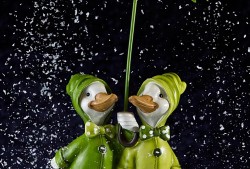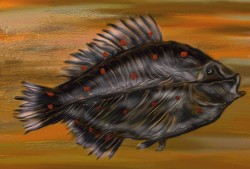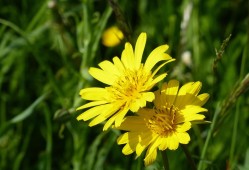Discovering the Wonders of Butterflies:A Glimpse into Their World in English
- 百科大全
- 2025-08-12
- 30
Introduction
Butterflies are among the most enchanting and captivating creatures in the natural world. With their vibrant colors and delicate wings, they have long been a symbol of beauty and transformation. In this article, we will delve into the fascinating world of butterflies, exploring their biology, behavior, and the importance of conservation efforts. Let's embark on a journey to uncover the secrets of these fluttering marvels.
The Life Cycle of a Butterfly
The life cycle of a butterfly is a remarkable process that involves four distinct stages: egg, larva (caterpillar), pupa (chrysalis), and adult. Each stage plays a crucial role in the development and survival of these insects.
1、Egg: The life of a butterfly begins when a female deposits her eggs on a suitable host plant. The choice of plant is critical, as the caterpillars that hatch from these eggs will rely on it for food. The eggs are often laid in clusters or individually, depending on the species.
2、Larva (Caterpillar): After hatching, the caterpillar feeds voraciously on the host plant, growing rapidly as it sheds its skin multiple times. This stage is characterized by significant changes in size and appearance, with the caterpillar eventually reaching its final instar before entering the pupal stage.
3、Pupa (Chrysalis): The caterpillar forms a protective shell called a chrysalis, within which it undergoes a remarkable transformation. During this time, the caterpillar's body breaks down and reorganizes into the adult butterfly. This process, known as metamorphosis, is a testament to the incredible adaptability of these creatures.
4、Adult: Once the metamorphosis is complete, the adult butterfly emerges from the chrysalis. It must pump fluids into its wings to expand them fully before it can take flight. Adult butterflies feed on nectar from flowers, which provides them with the energy needed for reproduction and migration.
Butterfly Behavior and Communication
Butterflies exhibit a variety of behaviors that are essential for their survival and reproduction. These behaviors include feeding, mating, and migration.
1、Feeding: Adult butterflies feed on nectar from flowers, which provides them with the energy they need to fly and reproduce. They have a long proboscis, or tongue, that they can extend into the flower to reach the nectar.
2、Mating: Courtship and mating rituals vary among butterfly species. Males often use visual cues, such as wing patterns, and chemical signals to attract females. Once a female is receptive, the male will mate with her, and she will lay fertilized eggs on a suitable host plant.
3、Migration: Some butterfly species, such as the Monarch, undertake incredible migrations to escape harsh winter conditions. These journeys can span thousands of miles and involve multiple generations of butterflies.
The Importance of Butterfly Conservation
Butterflies are important indicators of environmental health, and their populations can be affected by habitat loss, climate change, and pesticide use. Conservation efforts are crucial to ensure the survival of these beautiful creatures.
1、Habitat Preservation: Protecting and restoring butterfly habitats, such as meadows and forests, is essential for their survival. This can be achieved through the establishment of nature reserves and the promotion of sustainable land management practices.
2、Pesticide Reduction: The use of pesticides can have a devastating impact on butterfly populations. Encouraging the use of integrated pest management strategies and promoting organic farming practices can help reduce the reliance on harmful chemicals.
3、Citizen Science: Engaging the public in butterfly monitoring and conservation efforts can help gather valuable data on butterfly populations and raise awareness about their plight. Programs like the North American Butterfly Association's "Butterfly Count" encourage people to participate in the collection of this important information.
4、Education and Awareness: Educating the public about the importance of butterflies and the threats they face is a key component of conservation efforts. By understanding the role butterflies play in ecosystems and the challenges they face, people can become more motivated to protect these delicate creatures.
Conclusion
Butterflies are not just beautiful creatures to admire; they are essential components of our ecosystems, contributing to pollination and serving as indicators of environmental health. By understanding their life cycle, behavior, and the importance of conservation, we can take steps to protect these enchanting insects for future generations. As we continue to learn more about butterflies, we deepen our appreciation for the wonders of the natural world and our role in preserving it.













